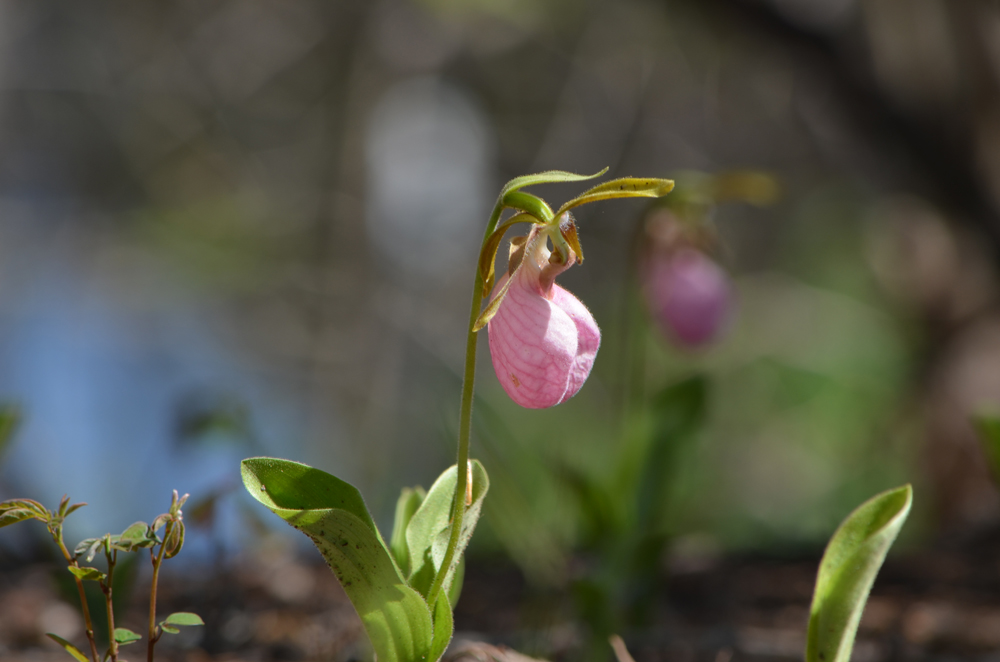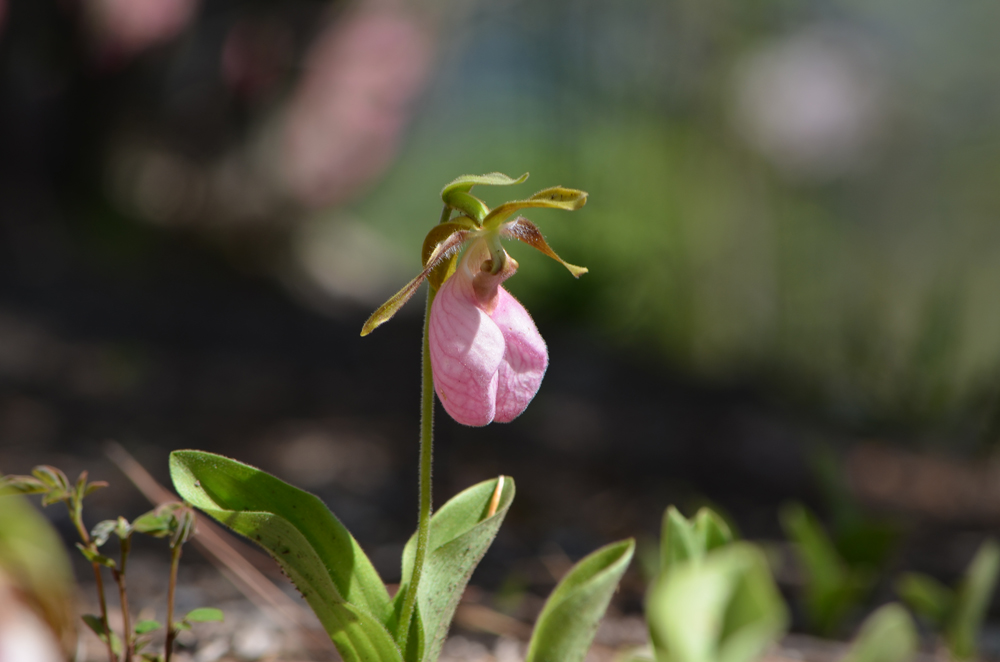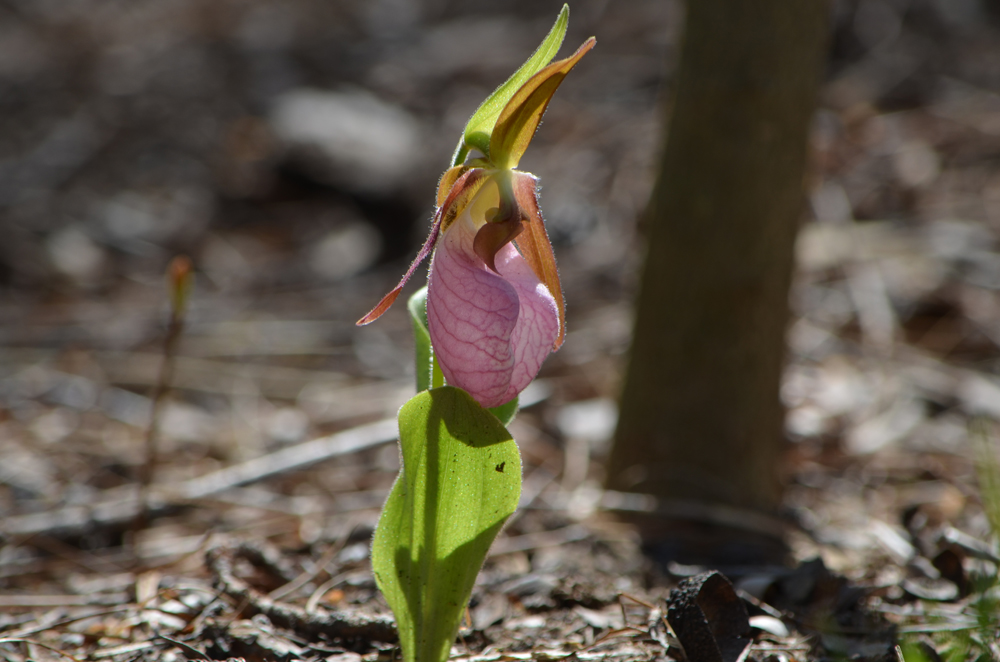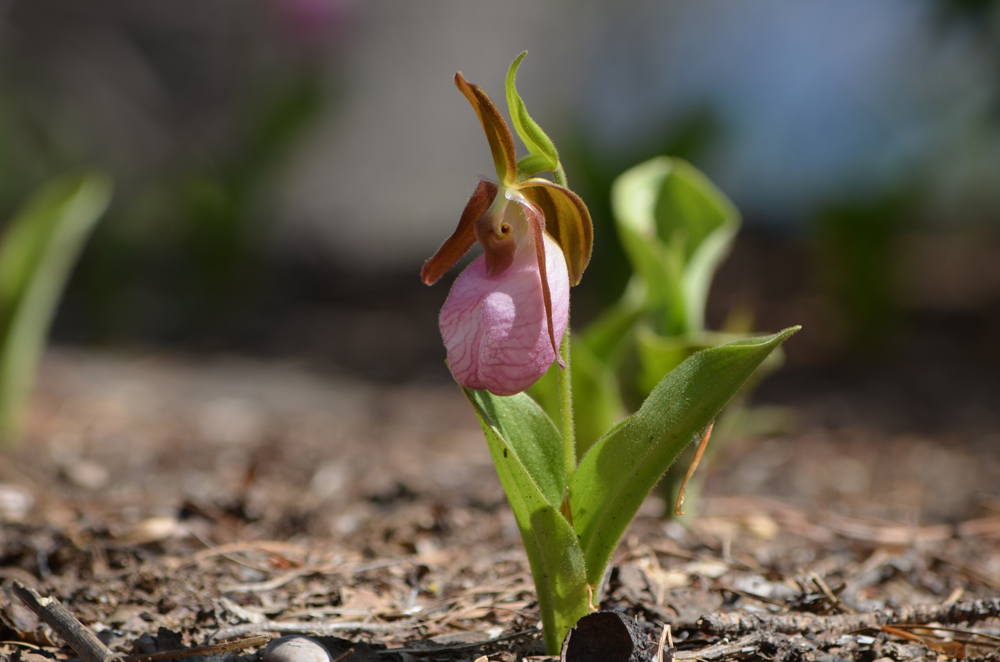Amazing Pink Lady’s Slipper

The Lady Slipper or Cypripedium acaule along the Wildside Walk. In the background you can see a second bloom.
Pink Lady’s Slippers are a native wildflower. But this fascinating plant attracts quite a bit of attention, more so than most wildflowers.
In addition to its striking appearance, it is endangered in some areas of the country. So this is a special plant indeed. If the appearance of this beauty doesn’t convince you of nature’s amazing feat, perhaps this will: The Lady Slipper, or Cypripedium acaule, requires the help of not one, but two other creatures to reproduce and survive. First, it has a mutualistic relationship with a fungus in the Rhizoctonia family. Threads of this fungus attach themselves to the seed of the lady slipper, open them and provide nutrition for the seed. Secondly, after the plant matures and starts to bloom, it requires the help of yet another “friend.” The Lady Slipper smells sweet and tricks bees into thinking it has nectar. The bee climbs inside the Lady Slipper only to become trapped. The bee cannot escape without collecting pollen on its way out, and then visits several more Lady Slippers, delivering the pollen, before it may realize there is no nectar to be found on any of these strange flowers! In addition, Lady Slippers take a very long time to grow, and is a favorite snack of white tailed deer.
This gorgeous plant with so many odds stacked against it, has one more final obstacle to overcome. Humans have a fascination with the plant. In addition to a history of parts of the plant being used as a replacement for Valerian, a sedative, for medicinal use hundreds of years ago, some humans have tried to capture its beauty by collecting the plants. As you have probably already figured out, this is a very bad idea. In addition to removing the plant from the wild where others might discover and enjoy it (and where it provides shelter to slugs, crickets, beetles, centipedes and even snakes), most of the moved or collected plants never survive. Because the plants require the fungus and very specific growing conditions, they die in their new location.

In this photo, you can really examine the hairs and the “wings” of the Lady Slipper (Cypripedium acaule).

This Lady Slipper appears to be just opening for the first time. Its petals are not fully extended yet.
We invite you to come and visit this very special and somewhat unusual looking flower that is blooming now along the Wildside Walk. We ask you to take great care to not step off the path or into the beds. By staying on the paths, not only to do help us avoid the spread of soil-borne disease from plant to plant, but also, you keep any lady slippers that might be just under the soil, about to pop up from being trampled. Want a photo? Great! Be sure to bring your long telephoto lens. This one was shot with a 55 – 300 mm lens, and we think it’s plenty close.
